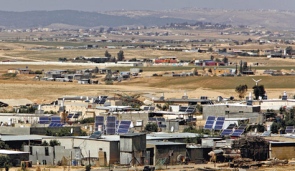Negev’s Bedouins: a new Nakba in the making
 Saturday, September 17, 2011 at 10:02PM
Saturday, September 17, 2011 at 10:02PM By Firas Khatib, Al-Akhbar – 16 Sept 2011
http://english.al-akhbar.com/content/negevs-bedouins-new-nakba-making
Bedouins in the Negev continue to be targeted by Israeli efforts to displace them. The Israeli government has now approved a plan that would uproot 30,000 Palestinians and place them in “recognized villages.”

The situation of Palestinians inside the green line is bleak, especially when compared to the hopeful atmosphere sparked throughout the region by the Arab Spring. Plans are underway to forcibly relocate tens of thousands of Palestinian Bedouins to designated towns that are in a deplorable condition.
The relocation scheme was among the recommendations of the Prawer Report, which called for relocating more than 30,000 Arab Bedouins in the Siaj section of the Negev to housing compounds elsewhere in the desert region south of the country.
This plan is part of an Israeli settlement policy that targets Arab Bedouins who live in the Negev. The Israeli state has always sought to settle the largest possible number of Arabs on the smallest possible area of land. The Netanyahu government’s relocation plan, however, is much wider in scope because of the sheer number of people involved. The Palestinians of the Negev view the plan as a “declaration of war” and are refusing the evacuation orders.
About 614,000 people live in the Negev desert, including 192,000 Palestinian Bedouins. Over 70,000 of these Bedouins live in what is called “unrecognized villages,” while the rest reside in “recognized towns.” The so-called recognized towns are not much better off than the unrecognized ones. They lack the most basic services and are allocated small budgets by Israeli authorities. Their conditions are similar to, if not worse than, those of other Palestinian villages and towns inside the green line.
Even though unrecognized villages receive no basic services from the state, the Bedouins of the Negev are determined to stay on their land. The Israeli government maintains that the Bedouins do not own the land and are living there illegally. Land and Planning Unit director at the Adalah legal center, attorney Suhad Bishara, tells al-Akhbar that Israeli claims to the land distort the history of the Bedouins in the Negev. Bishara says that most of the villages being discussed existed before the Nakba, i.e, before the creation of Israel. The rest were established after Bedouin tribes were expelled from the western Negev and moved to the Siaj area in the northeast of Beersheba, bordering the West Bank.
On the eve of the Nakba, 90,000 people lived in the Negev desert. The vast majority were uprooted. Only 12 percent managed to remain. They were relocated to an area known as “Siaj” (enclosure in Arabic) and relentlessly harassed by the Israelis in the hope that they would leave altogether. Bishara explains that the current effort to relocate the Negev’s native residents is a continuation of Israeli policies towards the Palestinians over the past 60 years. Bishara adds that in the 1960s and 1980s, a total of seven Arab towns were established in the Negev. Later on, ten more towns were recognized. The total area of these recognized towns constitutes only one percent of the district of Beersheba, whereas Bedouins constitute 31 percent of the population in the Negev.
Successive Israeli governments have tried to blame the Bedouins for the problem in the Negev by claiming that they are encroaching on property they do not own. This began in the 1970s when the Israeli government enacted land ownership registration in the Negev. Bishara explains that Israel used these procedures to claim that there is in fact no Bedouin land ownership in the area.
Under the guise of trying to find a compromise to resolve the matter, Israel then appointed the Goldberg committee, followed by the Prawer committee. They were tasked with developing a governmental plan with a specific time table whose purpose is to remove Bedouins from unrecognized villages. Bishara explains that Israel plans to impose this “compromise” by force, meaning that either the Bedouins accept the deal or the land will be registered as state-owned.
The Israeli policy of settling Bedouins in designated villages and towns, however, has not succeeded, according to Bishara. One reason for this has to with the fact that these towns were built on lands confiscated by Israel from Bedouin tribes. Other tribes refuse to live on these lands because it would be a violation of tribal laws that prohibit one tribe from encroaching on the land of another. Other reasons behind this failure have to do with Bedouin social and cultural traditions. Bishara says that most Israeli efforts to “Judaize” the Negev have failed.
 APJP |
APJP |  Post a Comment |
Post a Comment |
Reader Comments